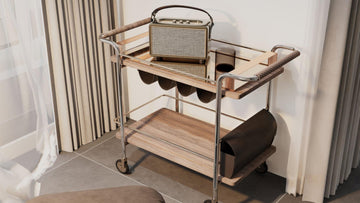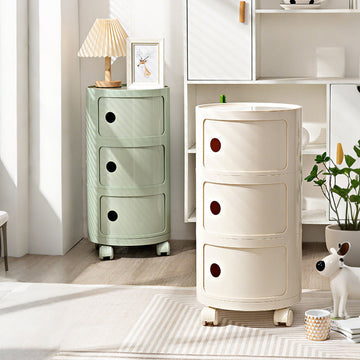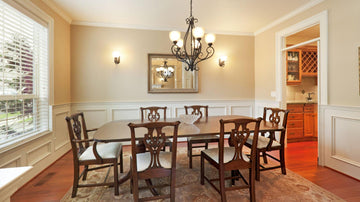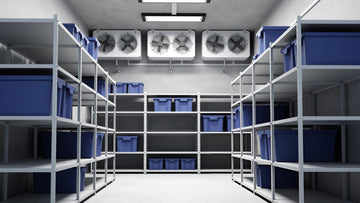Table of Contents
- When a Cart Isn’t Just a Cart
- What Makes Storage Carts So Useful (Even If You Didn’t Realize It Yet)
- Kitchen Chaos, Solved: How Storage Carts Change the Game in the Kitchen
- The Bathroom: Small Space, Big Demands (and Where a Cart Really Shines)
- At Work or WFH: Why Your Office Might Need a Cart Too
- Matching the Cart to the Space: Sizes, Shapes & Features That Matter
- Buying a Storage Cart? A Few Things to Think About First
- Use It Well, Make It Last
- Off-Label Uses & What’s (Possibly) Next
- Final Thoughts: One Small Cart, Many Smart Uses
When a Cart Isn’t Just a Cart
You probably didn’t expect to care this much about a storage cart. I didn’t either—until I realized how often I needed “just a little extra space” but didn’t want to drill into my walls or buy a bulky cabinet. If you’ve ever tried to prep dinner in a kitchen with one usable square foot of counter space, or balance skincare bottles on the edge of a bathroom sink, you know what I mean.
Storage carts aren’t new. But the way we use them? That’s changed. Once the realm of utility closets and cleaning crews, they’ve found their way into daily life—quietly, efficiently, and without taking up more room than necessary.
They’re not glamorous. They don’t promise to “spark joy.” But they show up. They help. And they move with you—literally. That’s what makes them so useful.
What Makes Storage Carts So Useful (Even If You Didn’t Realize It Yet)
They Move. And That Matters.
Most furniture stays where you put it. Storage carts don’t. They glide—across tile, wood, carpet—thanks to those little caster wheels you probably didn’t think twice about. But the mobility is where the magic happens.
Let’s say you’re in the middle of cooking. Your countertop is full. Your hands are messy. You need a clean surface and a place to set your spoon. Enter the cart. You roll it next to you, use it like a temporary prep table, and roll it back out of the way when you’re done. No rearranging cabinets. No building shelves. Just...roll.
That flexibility doesn’t just help in the kitchen. It’s useful in bathrooms, offices, hallways—anywhere you might need storage that isn’t nailed down.
They Stack Smart
Most storage carts use vertical space better than we do. Three tiers, maybe four, all within arm’s reach. You don’t have to bend down or stand on tiptoe. Everything’s there, sorted by level: often-used stuff on top, heavy or less-used stuff on the bottom.
It’s like having a mini tower of accessibility. And because many carts are open-shelved, you can see what’s where without rummaging. If visual clutter bugs you, baskets or bins help keep things looking tidy without hiding them completely.
Material Isn’t Just About Looks
Metal. Plastic. Wood. We all have preferences, but when it comes to storage carts, material isn’t just aesthetic—it’s functional.
Metal carts (especially powder-coated steel) tend to hold more weight and last longer, making them great for kitchens or offices. Plastic ones resist moisture, so they’re ideal for bathrooms. Wood is stylish and solid, but usually better in dry, controlled environments.
Some carts combine materials: metal frames with plastic trays, wood tops with steel supports. These hybrids often strike a balance between durability and design.

Kitchen Chaos, Solved: How Storage Carts Change the Game in the Kitchen
Let’s talk kitchens. No matter how big or small yours is, it’s probably not as organized as you’d like. That’s not a judgment—it’s just that kitchens get used hard. Between cooking, cleaning, and storing everything from spices to snacks, the space fills up fast.
A good kitchen cart can act like an extra pair of hands. Not literally, of course—but pretty close.
Prepping? The Cart Has You Covered
Picture this: you’re chopping vegetables, and you’ve already run out of room. You roll the cart over, place the cutting board on top, and now you’ve got a whole new surface to use. The top shelf holds the veggies, the middle keeps your spices nearby, and the bottom is stacked with mixing bowls. Suddenly, things feel less frantic.
You can even pre-load the cart before cooking. Stack it with the ingredients and tools you’ll need, and roll it over when it’s go time. It’s like mise en place on wheels.
Cooking? It Becomes a Sidekick
During the cooking process, the cart becomes your mobile station. It’s where you set down hot pans, grab tongs, or park a sauce you’re still working on. Need to collect food scraps? Add a small bin to the bottom. Done.
Some people even use heat-resistant trays on the top level to temporarily hold hot dishes. Others attach towel hooks or magnetic timers to the sides. The point is: the cart adapts.
After Dinner? It Helps You Clean Faster
Once the meal’s over, use the cart to clear the table in one trip. Stack plates, glasses, utensils. Roll it to the sink or dishwasher. If you’re not ready to wash up yet? Leave the dishes on the cart and deal with them later—it keeps your counters free in the meantime.
You can also store cleaning supplies on the bottom shelf, so they’re within reach when you finally tackle the mess. No more digging under the sink for that last sponge.
What Makes a Kitchen Cart Great (and What to Avoid)
Not all kitchen carts are created equal. Here’s what matters:
-
Surface Material: Water- and oil-resistant is a must. Stainless steel is durable; wood looks nice but needs sealing.
-
Height: Ideally, it matches your counter height, so you can use it as an extension without hunching.
-
Wheels: They should roll smoothly, lock firmly, and be easy to clean (because kitchens get messy).
-
Shelves: Open shelves are easier to access; closed ones hide clutter but can trap moisture.
-
Weight Capacity: If you’re putting cast iron or a stand mixer on it, check the specs.
And one more thing: skip the ones that wobble. If it’s shaky in the store, it’ll be worse at home.

The Bathroom: Small Space, Big Demands (and Where a Cart Really Shines)
Bathrooms are weird, aren’t they? They’re usually the smallest rooms in the house, yet somehow they’re expected to store an entire pharmacy, a mini spa, and a cleaning cupboard—all at once. If you’ve ever had shampoo bottles fall on your foot, or forgotten where you put the nail clippers (again), you’re not alone.
That’s where a storage cart can quietly change things.
Not Enough Cabinets? No Problem
Most bathrooms don’t come with enough built-in storage. Even when they do, it’s often awkward to reach or already packed with towels and toilet paper. A cart, especially a slim one, can slide into tight corners and turn dead space into usable space.
Pull it out when you need it. Tuck it away when you don’t. And because it’s open, you don’t have to play guessing games with drawers. You can see what’s where at a glance.
What to Put on It?
Honestly, it depends on who’s using the space. But here’s what tends to work:
-
Top tier: Everyday items. Toothbrushes, face wash, hairbrushes. The things you reach for first thing in the morning.
-
Middle tier: Backup products. Extra toothpaste, razors, cotton pads. The stuff you don’t need daily but like to have nearby.
-
Bottom tier: Heavier or less-used items. Cleaning sprays, bathroom wipes, spare toilet rolls.
If more than one person shares the bathroom, assign layers. One shelf per person. No more mix-ups. No more “Who moved my moisturizer?” conversations.
What Matters Most in a Bathroom Cart?
Bathrooms are humid. Sometimes very. So material choice is key:
-
Plastic or powder-coated metal is ideal. They don’t rust easily and can handle the occasional splash zone.
-
Drainage holes or slatted shelves help prevent water buildup.
-
Smooth surfaces make cleaning easier. You don’t want mildew growing in corners you can’t reach.
-
Rounded edges and anti-slip wheels are a bonus—especially if you’ve got kids running around barefoot.
Also, if you’re storing bathroom chemicals or sharp tools, look for a cart with a small lockable compartment or at least a higher top tier that’s out of reach for little hands.

At Work or WFH: Why Your Office Might Need a Cart Too
If you’ve ever worked at a desk that mysteriously shrinks over the course of the day—one minute it’s clear, the next it’s covered in notebooks, wires, and a half-eaten granola bar—you know the struggle.
And in open-plan offices or shared co-working spaces, there’s often just not enough surface area or personal storage. That’s where a storage cart can become less of an accessory and more of an essential.
A Cart That Works as Hard as You Do
In the office, a cart isn’t about aesthetics. It’s about sanity. It’s your mobile drawer, your paper sorter, your cable wrangler. And in home offices, it’s a way to keep work life from creeping into every corner of your living space.
Here’s how people actually use theirs:
-
For documents: Keep current files on top, archived ones below. Use standing folders or trays to keep things from toppling.
-
For tech gear: Chargers, power banks, earbuds, USB cables—all in one place. No more digging in drawers.
-
For personal items: A small towel, a snack stash, maybe even a candle. It’s your space, after all.
Some even double their cart as a standing desk booster or a place to dock a second monitor.
What Makes a Good Office Cart?
-
Quiet wheels: No one wants a squeaky cart rolling through a Zoom call.
-
Neutral design: Black, white, or wood-tone finishes tend to blend in better than neon plastic.
-
Secure compartments: If you deal with sensitive information, opt for a model with a lockable drawer.
-
Cable management: Some carts have built-in hooks or clips. If not, you can DIY this with velcro ties or adhesive mounts.
And if you hot-desk or move between rooms, a compact, sturdy cart can make your “mobile office” feel a little more yours.

Matching the Cart to the Space: Sizes, Shapes & Features That Matter
Not all carts fit all spaces. It’s tempting to buy the one that looks best online or has the most features, but if it doesn’t actually fit between your sink and shower, or under your desk, you’re back to square one.
Let’s break it down by room.
In the Kitchen
-
Standard kitchens: Look for carts around 50–70 cm wide. That’s usually enough to hold what you need without blocking your path.
-
Small kitchens: Go slim. Think 30–40 cm wide, and ideally something that tucks beside your fridge or stove.
-
Open kitchens or island-style: You can go bigger here—even double-wide carts with butcher block tops that act like extra prep stations.
Watch the height too. If you want to use it as a work surface, aim for countertop height (around 90 cm). Any lower, and it’s more of a shelf than a workspace.
In the Bathroom
-
Measure carefully. That narrow corner might look empty, but if it’s 25 cm wide and your cart is 28 cm, it won’t squeeze in.
-
Mind the door swing. If the bathroom door opens inward, make sure the cart won’t block it.
-
Check turning radius. You might need to pivot the cart to pull it out. Test with a box or chair first.
In the Office
-
Under-desk carts: Should be no taller than your desk clearance—usually under 70 cm.
-
Beside-desk carts: Can go taller, especially if you want to stack paper trays or use the top as a printer stand.
-
Shared space carts: Choose something neutral and discreet. Bonus if it has labeling options for different team members or functions.
Buying a Storage Cart? A Few Things to Think About First
You’d be surprised how easy it is to mess this up. The wrong size, the wrong wheels, the wrong material—and suddenly that “space-saving” cart is just taking up space. So before you click “add to cart,” take a minute to figure out what you actually need.
Start With the Boring Stuff: Measurements
Where’s it going? Measure the space. Twice. And don’t just measure the width—check the height too, especially if it needs to slide under something or fit between two cabinets.
Also: think about turning radius. If the hallway is narrow or the bathroom is tight, can the cart actually roll in and out without you lifting it sideways like a piece of awkward luggage?
What Are You Putting On It?
A few towels and some nail polish? Almost any cart will do. A stand mixer, a stack of books, or your entire printer setup? You need to look at weight limits.
If the cart doesn’t list a weight capacity, that’s a red flag. And if it looks flimsy in photos, it probably is.
How Does It Feel?
If you can, test it in person. Shake it a little. Does it wobble? Do the wheels stick or squeak? Are the shelves stable, or do they flex under pressure?
Online reviews help, but nothing beats seeing it in real life. If that’s not an option, choose brands that offer easy returns—just in case.
Other Smart Considerations
-
Match your space. A white plastic cart might look fine in the bathroom but weird in a wood-toned office.
-
Think noise. Metal wheels on tile floors can be surprisingly loud.
-
Look at the little things: Grip handles, shelf lips to stop things sliding off, even how easy it is to clean the corners.
Use It Well, Make It Last
Once it’s in your home, a storage cart can either become your favorite helper—or slowly turn into a junk pile on wheels.
A few simple habits can help:
-
Don’t overload the top shelf. Spread weight evenly so it doesn’t tip.
-
Group similar things together. This isn’t just about aesthetics—it makes your life easier.
-
Clean it regularly. Wipe the wheels, clear crumbs from corners, and don’t let spills sit.
-
For metal carts, keep an eye on rust—especially if they live in damp spots.
And every few months, check the structure. Screws loosen. Wheels wear. A five-minute tune-up can save you from a collapsed shelf later.

Off-Label Uses & What’s (Possibly) Next
Once you’ve lived with a storage cart for a while, you start seeing possibilities everywhere. It’s no longer just a bathroom or kitchen thing—it becomes a flexible solution, waiting for your next idea.
Some Unexpected (But Genius) Uses
-
Bar cart: Add a few bottles, some glasses, a shaker, and suddenly you’ve got a party on wheels.
-
Kids’ art station: Crayons, scissors, glue, paper. One shelf for each category. Roll it out during craft time, roll it back when you’re done.
-
Pet supply center: Leashes, grooming tools, treats—all in one spot by the door.
-
Plant stand: Use it to rotate your sun-loving plants from window to window.
Some people even use them as nightstands (especially in tight bedrooms), or as charging stations for devices. Once you start thinking of it as mobile storage instead of a fixed shelf, the ideas multiply.
Where Storage Carts Might Be Headed
Designers are starting to take storage carts seriously—not just as utility tools, but as part of the furniture conversation. Here’s what’s already happening (or on the horizon):
-
Modular systems: Carts where you can adjust the number of tiers, change shelf height, or even add drawers.
-
Eco-materials: Recycled plastics, bamboo frames, and water-based finishes are becoming more common.
-
Smart carts: Okay, this one’s niche—but we’ve seen early prototypes with USB ports, built-in lights, even app-based inventory tracking.
-
Aesthetic upgrades: Expect more variety in color, shape, and finish. Not everything has to be white plastic or industrial black steel.
In short: storage carts are shedding their utility-only image. They’re becoming lifestyle tools—with the looks and personality to match.
Final Thoughts: One Small Cart, Many Smart Uses
We tend to overlook small things that make a big difference. A good storage cart won’t change your life. But it might make it 10% smoother, 20% more organized, and about 80% less frustrating during your daily routines.
It’s the kind of object that earns its keep quietly—by being exactly what you need, right when you need it. Whether it’s helping you prep dinner, streamline your skincare, organize your cables, or just keep things a little neater in a busy home, that’s worth something.
And maybe most importantly? It moves with you. Through rooms. Through seasons. Through whatever life throws on your floor next.








